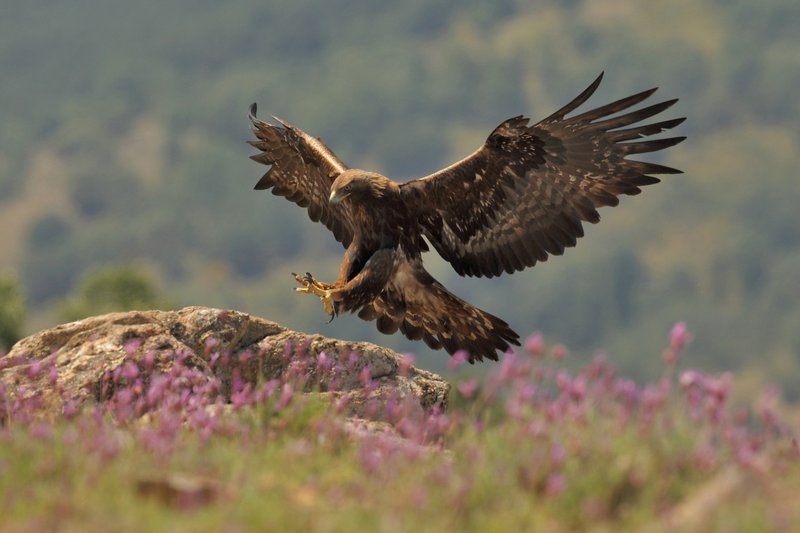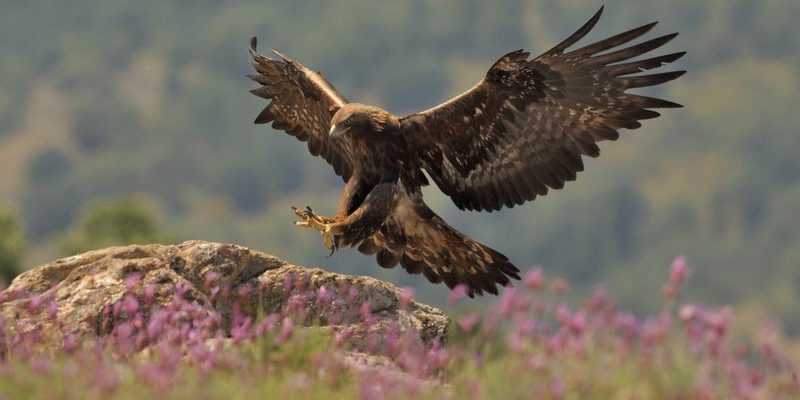
The golden eagle isn’t just another bird; it has a rich background that spans thousands of years. Its lineage dates back to the Miocene epoch, around 10 million years ago, when it started to diverge from other birds of prey. But what does this mean for the golden eagle today? Understanding its evolution helps us appreciate its role in ecosystems and the challenges it faces in a changing world. So, grab a cup of coffee, and let’s dive into the story of one of nature’s most impressive predators.
Origins of the Golden Eagle
The golden eagle belongs to the family Accipitridae, which also includes hawks, kites, and vultures. It’s believed that all these birds share a common ancestor that roamed the Earth millions of years ago. During the Miocene, climatic changes shaped the landscapes and habitats where these birds would live. The golden eagle adapted to open habitats, which are now primarily in the Northern Hemisphere.
You might be wondering how these changes influenced the golden eagle. As the climate evolved, so did the habitats, pushing the eagle to develop traits that made it a superb hunter. With a strong build, sharp talons, and excellent vision, the golden eagle became a top predator. This adaptability is crucial for survival, especially when you consider the golden eagle’s diverse diet, ranging from small mammals to larger birds.
Interestingly, the golden eagle isn’t just found in one place. It can adapt to various environments, from mountains and forests to grasslands and deserts. This flexibility is a vital reason why the eagle has thrived for so long. Picture it soaring over rocky cliffs, effortlessly riding the thermals, always in search of its next meal—this is where it truly shines.
An Icon Through the Ages
Throughout history, the golden eagle has been more than just a bird; it has held significant cultural symbolism in many societies. For Native American tribes, the golden eagle represents strength, courage, and wisdom. They often view the eagle as a messenger between humans and the divine. In ancient Rome, it was a symbol of power and military might, frequently seen on standards and shields.
This iconic status isn’t a coincidence. The golden eagle’s impressive size and hunting prowess have made it a symbol of majesty for centuries. For example, in Scottish culture, the eagle represents freedom and bravery, often associated with the rugged landscapes of the Highlands. Imagine standing atop a cliff, watching a golden eagle spread its wings against the backdrop of a setting sun—it’s a powerful image that resonates deeply.
In contrast to its revered status, the golden eagle has also faced challenges throughout history due to human impact. Habitat destruction, hunting, and persecution to protect livestock have led to declines in their populations. While they’re still celebrated in many cultures, it’s crucial to recognize the threats they face and work towards their conservation.
The Golden Eagle’s Role in the Ecosystem
Now, let’s talk about why the golden eagle matters in our ecosystems. As a top predator, it plays a vital role in maintaining the balance of nature. By controlling populations of small mammals and birds, these eagles help prevent overpopulation, which can lead to habitat degradation.
Think of the golden eagle as a natural regulator. Without predators like it, certain species can multiply rapidly, disrupting the local ecosystem. For instance, if rabbit populations go unchecked, they can overgraze vegetation, affecting other wildlife. So, the presence of the golden eagle indirectly supports a healthy environment.
Moreover, golden eagles often scavenge as well, feeding on carrion when available. This behavior helps recycle nutrients back into the ecosystem, benefiting other organisms. By keeping the environment in check, golden eagles contribute to the overall health of their habitats, making them a crucial piece of the ecological puzzle.
Challenges Faced by Golden Eagles
Despite their impressive adaptability and role in the ecosystem, golden eagles face several challenges today. Habitat loss is one of the most significant threats they encounter. As urban areas expand and agriculture intensifies, suitable nesting sites and hunting grounds become scarce. This encroachment into their habitats has resulted in declining populations in certain regions.
Another challenge is the poisoning caused by lead ammunition and other toxins. When golden eagles feed on animals that have ingested lead, they can become sick or even die. This unfortunate consequence highlights the need for responsible hunting practices and better awareness of environmental impacts.
Additionally, climate change poses a growing concern for golden eagles. Changes in weather patterns can disrupt their breeding seasons and the availability of prey. As temperatures fluctuate and habitats transform, these majestic birds must adapt quickly to survive. It’s a tough world out there, and they need our help to thrive.
Conservation Efforts for Golden Eagles
Given the challenges golden eagles face, numerous conservation efforts aim to protect them. Organizations and wildlife agencies are working to preserve their habitats, using strategies like creating protected areas and promoting sustainable land use practices. This approach ensures that golden eagles have the space they need to hunt and nest.
Education is another key aspect of conservation. Raising awareness about the importance of golden eagles helps communities understand the need to coexist peacefully with wildlife. Programs that teach responsible hunting methods and promote lead-free ammunition can significantly impact eagle populations.
Moreover, rehabilitation centers are crucial for injured or orphaned birds. By providing care and eventually releasing them back into the wild, these centers play a pivotal role in recovery efforts. The more we understand and appreciate the golden eagle, the better equipped we are to help protect this remarkable species.
The Future of the Golden Eagle
Looking ahead, the future of the golden eagle hinges on our actions today. While they’ve successfully adapted over millions of years, the current pace of environmental change is unlike anything they have faced before. We must commit to conservation and sustainable practices to ensure their survival.
You might be wondering what you can do to help. Simple changes in your daily life, like using non-toxic gardening methods or supporting conservation organizations, can make a difference. Every little effort counts when it comes to protecting our planet and its wildlife.
As we continue to learn about and appreciate golden eagles and their ecosystems, we become better stewards of the environment. Together, we can help ensure that future generations will also get to witness the soaring beauty of the golden eagle high above our landscapes.
In conclusion, the golden eagle is more than just a bird of prey; it’s an intricate part of our natural world. By exploring its evolution, cultural significance, and the challenges it faces, we deepen our connection to this magnificent creature. As we navigate the future, let’s carry forward the responsibility of protecting the golden eagle and the ecosystems it inhabits.

